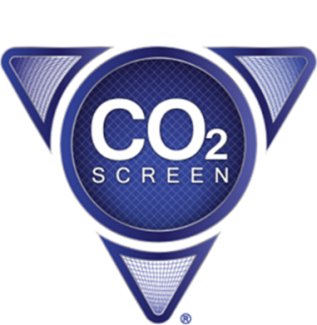CO2-SCREEN, a user-friendly, yet sophisticated tool developed by a team of NETL researchers to estimate the resource potential of storing captured carbon dioxide (CO2) in underground geological environments, continues to attract a wide range of international users as the world intensifies efforts to address climate change.
To date, the CO2-SCREEN tool has been downloaded 1,931 times. CO2-SCREEN is available at https://edx.netl.doe.gov/dataset/co2-screen.
Capturing the CO2 that is produced when carbon feedstocks are used in industrial applications before it enters the atmosphere and storing it underground is known as carbon capture and storage (CCS). CCS is seen as a cost-effective way to reduce emissions and address climate issues and a key in attaining the U.S goal of a net-zero carbon-emissions economy by 2050.
According to the International Energy Agency, depleted oil and gas fields and deep saline formations are most attractive for CO2 storage. These resources are layers of porous rock underneath a layer of impermeable rock that acts as a seal. This “cap-rock” traps the injected CO2.
The ability to accurately predict the CO2 storage capabilities in geologic formations is critical for leaders around the world to make high-level, energy-related government policy and business decisions.
That’s where CO2-SCREEN comes in. It provides a robust, user-friendly tool to estimate CO2 storage efficiency in a variety of geological environments, including saline formations, shale formations, and residual oil zones.
“Geologic formations found deep underground offer promising repositories for safe and effective storage of large volumes of anthropogenic CO2,” said Angela Goodman, Ph.D., who developed the tool with NETL colleagues, Foad Haeri, Eugene Myshakin, and Grant Bromhal. “However, subsurface geologic systems are variable and often poorly characterized. The scarcity of appropriate data makes it difficult to know with certainty how a system will respond to large‐scale injection and storage of CO2.”
CO2-SCREEN offers a graphical user interface that allows users to enter geologic data and efficiency factor ranges quickly and easily. It provides CO2 storage and efficiency outputs in the form of probability estimates. CO2-SCREEN uses DOE methods and equations as a consistent mechanism for calculating prospective CO2 storage resources.
Goodman, who will explain the importance of CO2-SCREENto the Geological Society of London in mid-September, said that “one of the key features of CO2-SCREEN is that it can perform storage calculations using very small and very large data sets. It can use averaged data for a single formation or region, or it can handle incredibly large and diverse data sets.”
The London workshop will bring together researchers and practitioners to discuss various ways in which storage efficiency is being and used and to discuss shortcomings.
The importance of CO2-SCREEN as a publicly available resource is evident in both the number and prominence of the organizations that have downloaded the tool. Industry leaders and educators from all over the world have reached out to NETL for discussions of the tool.
Academic institutions:
- The Instituto Geológico y Minero de España is using CO2-SCREEN to calculate the potential CO2 Storage in geological basins in Spain.
International organizations:
- La Pampa of Argentina used CO2-SCREEN to complete a preliminary CCS potential storage capacity assessment for the region of La Pampa.
- Petroleum and CO2 Storage Resources in Hamburg, Germany will use CO2-SCREEN to estimate CO2 storage in depleted gas reservoirs.
US-based organizations:
- The Arizona Geological Survey is using the tool in a characterization study for potential CCS as part of a DOE focused project in south-central Arizona.
- Carbon America is using CO2-SCREEN to calculate storage efficiency.
A team of experts from DOE national laboratories, higher education, private organizations and other federal departments were involved in creating CO2-SCREEN. Team members represented the Energy and Environmental Research Center, Los Alamos National Laboratory, the U.S. Geological Survey, Battelle, Matric, Pacific Northwest National Laboratory, Carnegie Mellon University, and Salem State.
NETL is a U.S. Department of Energy national laboratory that drives innovation and delivers technological solutions for an environmentally sustainable and prosperous energy future. By using its world-class talent and research facilities, NETL is ensuring affordable, abundant and reliable energy that drives a robust economy and national security, while developing technologies to manage carbon across the full life cycle, enabling environmental sustainability for all Americans.




